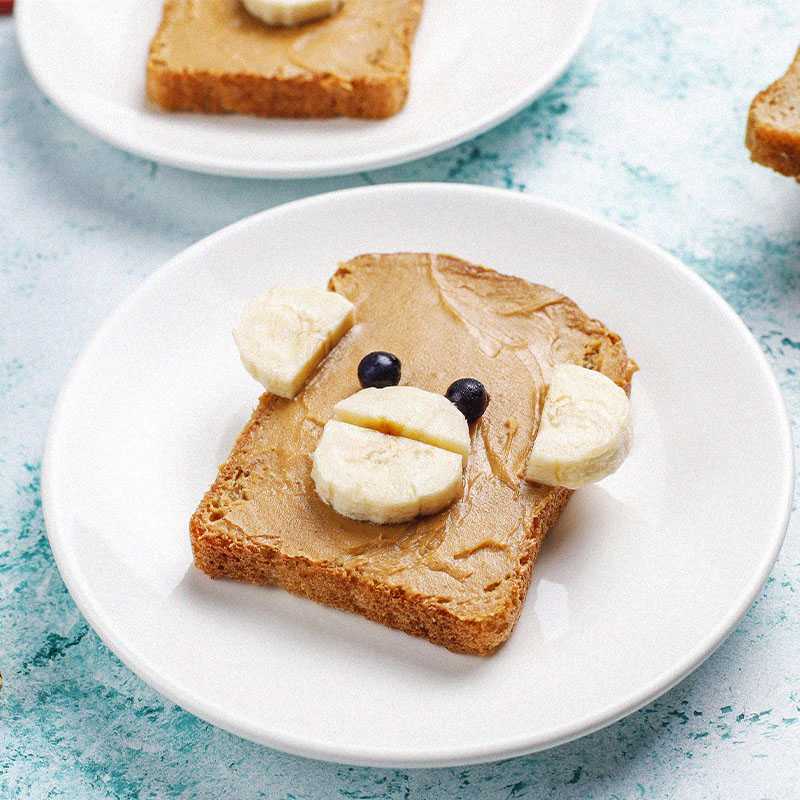The nutritional benefits of bananas?
The banana, an ancestral fruit
Origin of the banana
The banana is a tropical fruit from the banana tree. This plant measures between 2 and 9 meters high. It is one of the first fruits consumed by man, since prehistoric times. The bananas grow in regime, kind of fruit cluster, which can group from 200 to 250 fruits for a total weight of more than 30 kg. This fruit grows in tropical climates. Thus, bananas are imported from Africa or the West Indies all year round.
Organoleptic characteristics
The banana has a tender and sweet flesh at the organoleptic level when the fruit is ripe. There are different varieties of bananas that can be eaten cooked or raw. In ice cream, in the frying pan or in the form of fritters, the alternatives are multiple. With the maturity of the fruit, the aromas will increase, and the astringency will decrease to gain in sweetness.
The skin of the banana changes from a green color to a yellow color, when the banana must be eaten. As they ripen, brown spots will appear on the skin. Belgians consume an average of just over 8 kg of bananas per capita each year.

The banana, some fruit with multiple benefits
Nutritional values of raw banana pulp
The banana is a fruit known for its richness in carbohydrates which make it a good source of energy. Nevertheless, it remains a low energy density food (90.5 kcal per 100 g) that should be favored in contrast to high energy density foods such as chocolate bread (430 kcal per 100 g).
Energy (kcal/100 g) | 90,5 |
Proteins (g/100 g) | 1,06 |
Carbohydrates (g/100 g) | 19,7 |
Fat (g/100 g) | < 0,5 |
Sugar (g/100 g) | 15,6 |
Dietary fiber (g/100 g) | 2,7 |
Banana, source of fiber
Bananas are a very good source of fiber. Essential for good health, fiber does not provide energy, but allows a better transit. Below are the recommendations concerning fiber intake for children as established by the European Food Safety Authority.
Dietary fibers | Girls and boys (g/jour) |
< 1 year | No recommendation |
1 – 3 years | 10 |
4 – 6 years | 14 |
7 – 10 years | 16 |
11 – 14 years | 19 |
15 – 17 years | 21 |

Rich in minerals, vitamins, and antioxidants
In terms of nutrition, the banana is a very complete fruit. It contains many minerals and vitamins, especially potassium, manganese, and vitamin B6 in large quantities. This explains why this fruit remains the favorite of athletes.
| Composition of the banana (100 g portion) | Daily contribution of the banana to the recommended intake (%) |
Copper | 0,06 mg | 6% |
Magnesium | 28 mg | 7% |
Manganese | 0,36 mg | 18% |
Phosphorus | 29 mg | 4% |
Potassium | 320 mg | 16% |
Iron | 0,2 mg | 1% |
Vitamin C | 7,16 mg | 8% |
Vitamin B1 | 0,054 mg | 4% |
Vitamin B3 | 0,39 mg | 2% |
Vitamin B5 | 0,31 mg | 5% |
Vitamin B6 | 0,18 mg | 12% |
Vitamin B9 | 19 µg | 9% |
Rich in antioxidants
The banana also contains many phenolic compounds whose content will increase with the ripening of the fruit. These compounds are known for their antioxidant properties. They play a protective role against oxidative stress responsible for the aging of our cells.
Summary
The banana is a tropical fruit that has been consumed for thousands of years and rightly so. This fruit, known for its nutritional richness, is also an excellent source of fiber. Whether it is vitamins or minerals, nothing is missing in this fruit with its tasty organoleptic qualities. Whether in a fritter, in a piece, or a pan, bananas will delight young and old alike.

Key take-home messages :
– The banana has been eaten since prehistoric times
-Wrapped in a yellow skin when ripe, its flesh is tender and sweet
-The banana is a very good source of fiber
-Bananas are a good source of potassium, manganese, and vitamin B6
Références
- Agence nationale de sécurité sanitaire de l’alimentation, de l’environnement et du travail. Table de composition nutritionnelle des aliments Ciqual 2017
- Association interprofessionnelle de la banane, la qualité de la banane tout au long de la filière, 2014
- Li LF, Wang HY; Zhang C, Wang XF, Shi FX, Chen WN, Ge XJ. Origins and domestication of cultivated bananas inferred from chloroplast and nuclear genes. PLoS One. 2013
- Singh B, Singh JP, Kaur A, Singh N. Bioactive compounds in banana and their associated health benefits – A review. Food Chemistry. 2016
- <a href=’https://www.freepik.com/photos/kids-nature’>Kids nature photo created by freepik – freepik.com</a>
- <a href=”https://www.freepik.com/photos/little-girl”>Little girl photo created by Kireyonok_Yuliya – freepik.com</a>
- <a href=’https://www.freepik.com/photos/banana-cake’>Banana cake photo created by azerbaijan_stockers – freepik.com</a>
- <a href=’https://www.freepik.com/photos/eating-breakfast’>Eating breakfast photo created by freepik – freepik.com</a>